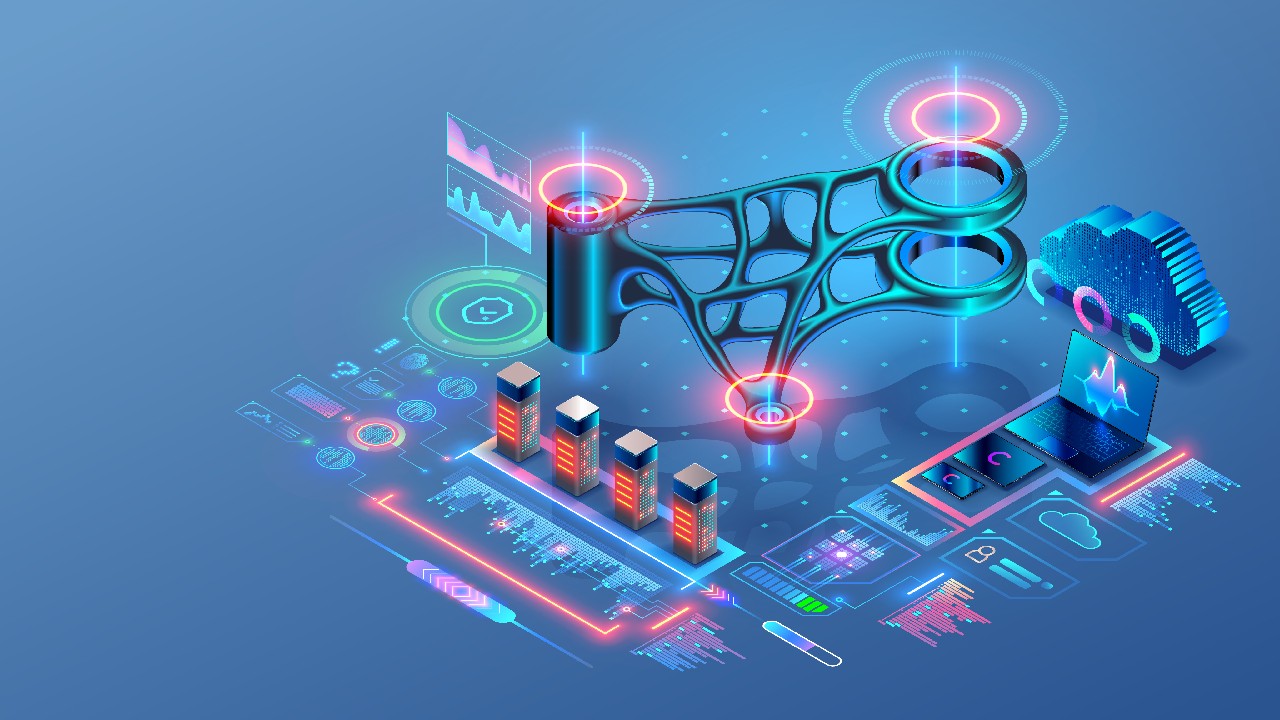Are we in for a future of robot-designed products, or will a human-AI partnership help companies design better products faster?
By now, you’re probably familiar with how AI is being deployed across industries to help businesses reduce costs, trim waste, and increase teams’ agility and speed. But what about the humanistic areas of business, such as design? Does AI and digital twinning – building a highly detailed digital model of a physical thing and continually updating its data – have a role in these endeavors?
Will AI Take Over Design, Too?!
First, let’s be clear: We’re not proposing that AI take over all aspects of design. As with other business areas, the real strength lies in the AI-human partnership. With AI to do the routine tasks and humans free to spend more time on creativity and problem-solving, this partnership plays to the strengths of each entity.
What impact do we foresee AI having on product design? Largely, we see AI and digital twins as technological enablers to the design process, making it faster, more agile, and even more human-centered. Here’s how.
Three Ways AI and Digital Twins Can Improve the Future of Product Design
Enabling Customer-Centric Design
Designers, famously, inadvertently create products for themselves – unconsciously letting their own ideas about how a product works or is used influence their choices. This can be innocuous, but it can also result in products that are used differently than expected. Such products may be capable of optimization once the designers realize the difference.
Enter digital twins. By making a very detailed digital version of their product, teams can test various use cases and scenarios prior to launch. Even more importantly, they can use digital twinning to link a live, in-actual-use product to their computer model. The “digital twin of a smart, connected product can provide insight into how the product is behaving in the field, helping to steer product design and provide intelligence for successful service calls. The connectivity and digital twin provide an opportunity to understand how a product is used and leverage that insight to make the product better.” [Source: Digital Engineering 247]
In other words, it can shift product teams’ thinking to truly user-centered design, capturing information that even the most in-depth user research interviews might miss.
A Sharper Vision with Digital Twins
In the Autodesk article AI, Digital Twins, and the Future of Product Design Processes, the authors envision AI assistants helping with various parts of the design process: “During early stages of a design process, AI assistants can provide quantitative research and collect customer preferences. As a design space is defined, AI assistants can help distill constraints and requirements. AI assistants can then generate many design options and help their human teammates curate and select from those options based on various simulations and evaluations.”
If you’ve ever been involved in an Agile design process in any way, you’ll know that a great many design options are sketched and then discarded. Often, elements from various designs are picked and assembled into a new, better design. Having an AI assistant (or several AI assistants) can shorten the timelines on this process; having them do time-consuming work like preparing research and collecting requirements mean designers can spend more time on their craft. And that leads us to the next point.
Speeding Up the Design Process
Research is an integral part of the design process; it’s also a very time-consuming one. Just as we’ve seen AI speed up the research, information-gathering, and information-retrieval processes across industries, we can see the same possibilities for AI-enabled research in product design. This is one of the ways that AI is applicable in nearly all industries and use cases: streamlining entire business processes. For example, AI would certainly be needed to process and analyze the data stream from a digital twin. (We’ve already witnessed the success of a similar method with machine sensor data in mining and manufacturing.) They can also help product teams sort through other information and enhance the research process in general.
AI to Dominate Product Designing
Across industries, products of all kinds are facing pressure to become more user-friendly and relevant. By allowing product teams and especially product designers to understand the user experience in detail (and nearly in real time with connected digital twins), AI has the power to transform the design process.
Related Absolutdata products and services: NAVIK Digital Twin, NAVIK AI Platform, AI & Data Sciences, Market Research, Customer Analytics































